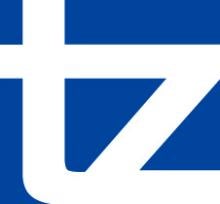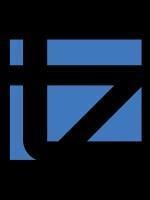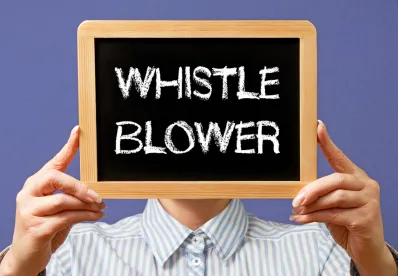When small businesses, healthcare workers, and the general public needed masks and emergency relief funds most, some people bought sports cars and other luxury items and vacations instead. New revelations illuminate the billions of dollars embezzled from the federal government’s Paycheck Protection Program (PPP) in 2020 and beyond.
In what prosecutors are calling “the biggest fraud in a generation,” fraudsters took advantage of the speed with which the PPP was rolled out, the loose structure of its requirements, and the general atmosphere of panic and alarm from 2020 onwards, according to recent information. These fraudsters lined their own pockets at the expense of taxpayer funds, taking roughly $80 billion in relief (10% of the total funds allotted for this program) before it could go to small businesses and their employees.
PPP loan abuse scams are just one of the dark sides of the pandemic, only recently coming to light. If you have information about someone who took advantage of government relief funds for COVID-19, speak to a PPP loan abuse lawyer today.
What is the PPP and How Was it Supposed to Work?
The Paycheck Protection Program was passed as part of the 2020 CARES Act, implemented by the Small Business Administration (SBA) with help from the Department of the Treasury. As part of the initial push for COVID-19 relief, up to $659 billion was earmarked for job retention efforts focused on Americans employed by small businesses.
Loans were made available to small businesses who applied for them, with the intent to cover up to 8 weeks of payroll costs for small business employees, plus benefits. These loans were meant to provide a safety net during periods of shutdowns. PPP loans could be eligible for forgiveness if they were spent on qualified business expenses by business owners, meaning they would not have to be paid back.
PPP loans were available to small business owners and eligible nonprofit organizations, veterans organizations, and Tribal businesses over the course of 2020. Funds could also be distributed to individuals who were self-employed or to independent contractors.
Scams, Abuse, and Misappropriation of PPP Funds
According to recent reports, the PPP was targeted by unscrupulous individuals almost immediately, draining the program of funds and exhausting its resources before it could accomplish the goal of providing relief for actual small businesses. Unlike unemployment relief, which was guaranteed to those who were qualified, the pool of PPP money was limited, meaning loans had to stop being offered once the funds were exhausted. This had the double effect of robbing taxpayer money and preventing those who were truly in need from using the resources set aside for them by the federal government’s pandemic response.
How Did It Happen?
Hannibal Ware, Inspector General for the SBA, testified before Congress about the rampant fraud within the PPP and Economic Injury Disaster Loans programs, saying that he and his team offered numerous recommendations to the SBA, but that they weren’t “taken seriously.” The Inspector General reported that the SBA under President Donald Trump removed fraud-control guidelines before launching the program. According to the Inspector, speed was prioritized over due diligence, leading to billions of dollars of waste, corruption, and theft. While the Government Accountability Office warned repeatedly of fraud risk, the program continued.
According to investigators, the PPP was especially vulnerable because of the way it was structured. One example was the explicit guidance that lenders “will be held harmless for borrowers’ failure to comply with program criteria.” This kind of open-ended structure incentivized lenders to distribute funds without concern for how they would ultimately be spent.
Additionally, certifying eligibility for PPP loans was largely the responsibility of the borrower. This led to individuals using random phone numbers and addresses to report non-existing businesses and invent employees. They then certified their own eligibility for loans-turned-grants worth thousands, even millions of dollars.
Finally, identity thieves used other peoples’ names and addresses to apply for SBA loans. These scams are only coming to light now that real Americans who own small businesses are beginning to receive bills.
How Much Money Was Lost?
Government and research centers estimate different amounts stolen from the PPP, with more coming to light all the time. About 10% of total Paycheck Protection Program funding (about $80 billion) was misappropriated, according to recent estimates. However, this amount is in addition to anywhere from $87 billion to $400 billion in pandemic assistance funds stolen by international fraudsters – a sum greater than what the federal government spends yearly on food stamps or K-12 education.
The SBA’s Inspector General, tasked with maintaining the Pandemic Response Accountability Committee to fight fraud, estimates that about $78 billion was made in fraudulent Economic Injury Disaster Loans, while the Secret Service estimates $100 billion was lost, when accounting for unemployment fraud as well.
What Will Happen with Stolen PPP Loan Funds?
Money that was meant to provide necessary paychecks, benefits, and stability during difficult times was instead spent on luxury cars, dating sites, jewelry, child support payments, multiple homes, and more, according to prosecutor reports. Funds are difficult to recoup not only because of the expansive nature of the program, but because loans were meant to be wide-ranging and forgivable. The Pandemic Response Accountability Committee is currently looking through vast data, including using artificial intelligence, to find patterns before sending human inspectors out to inquire about how and where funds were disbursed.
Do You Have Information about PPP Loan Abuse? Become a Whistleblower
If you have information about false information provided on a PPP loan application, misspent loan funds, or other kinds of wrongdoing regarding COVID-19 relief money, you may be able to help. Speak to a PPP loan abuse attorney today to see what kinds of proof can be used to hold wrongdoers accountable.
Whistleblowers are protected under the False Claims Act against retaliation by their employers and are eligible for financial awards for their honesty. If your information helps the federal government recoup money stolen through fraud, you may be eligible to up to 30% of the total funds recovered.




 />i
/>i

